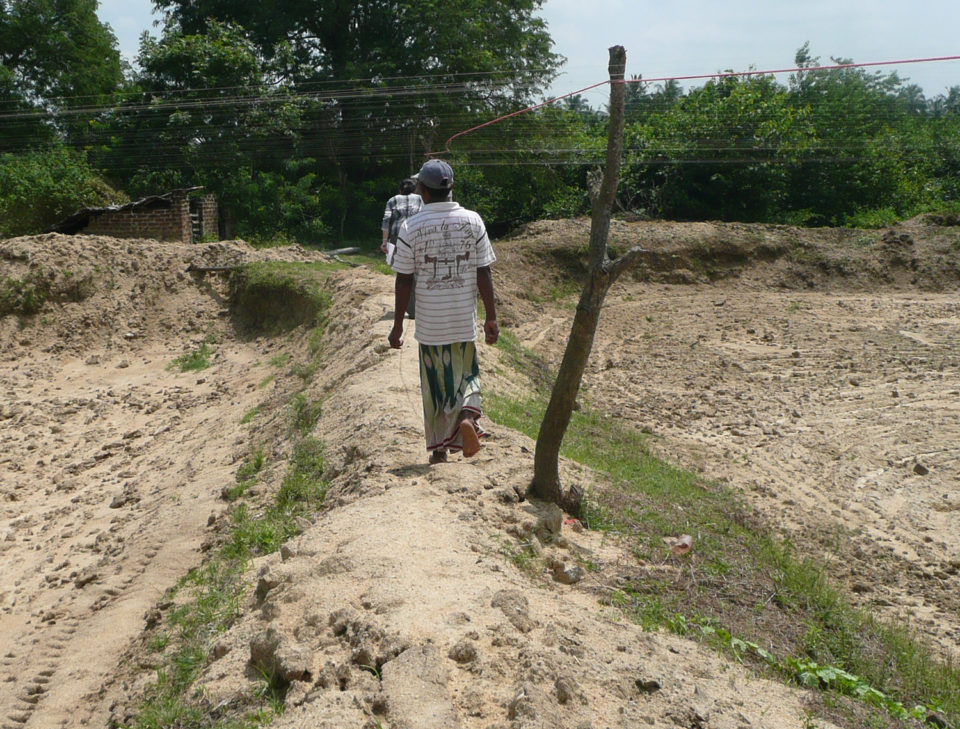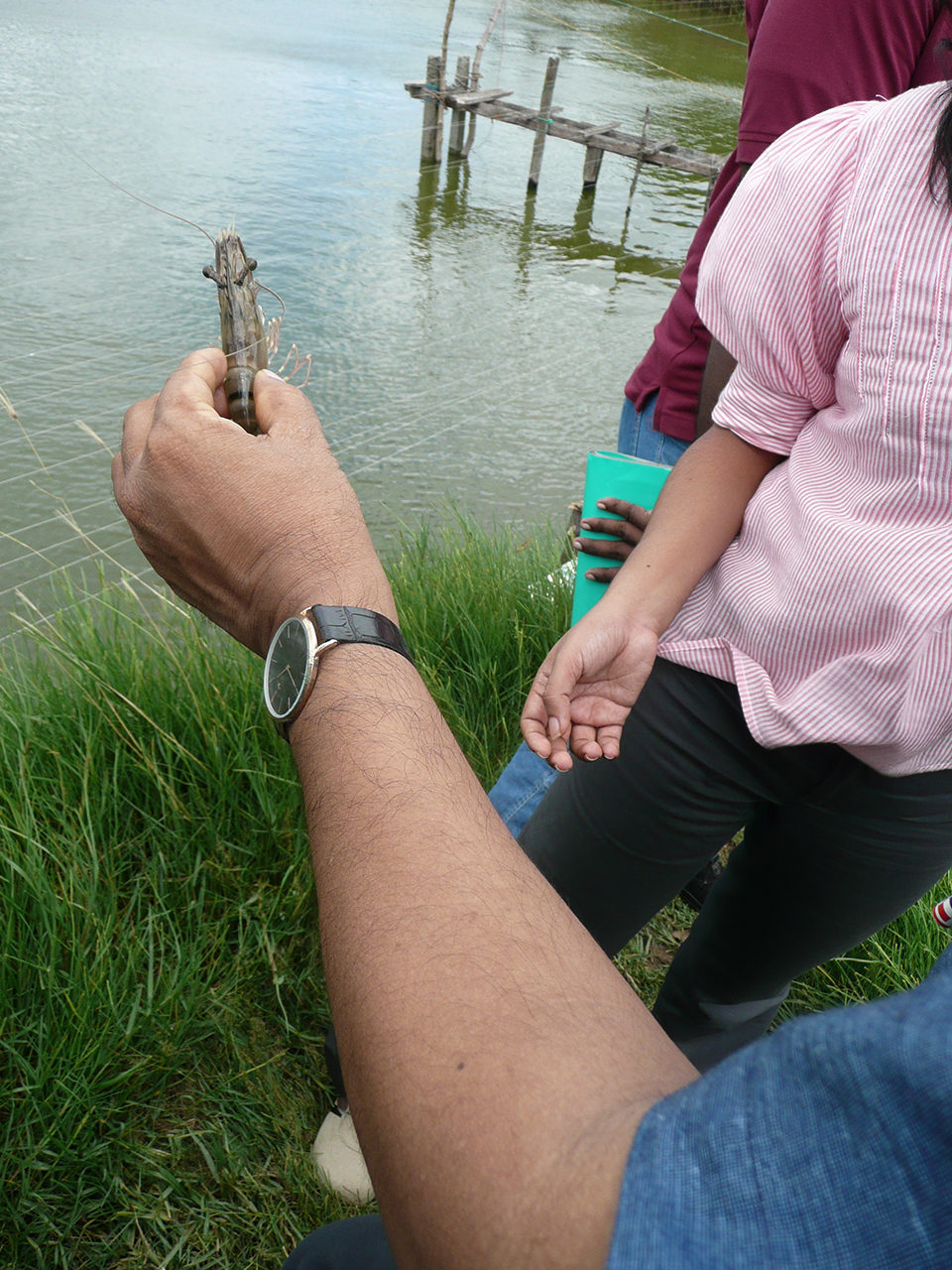Farmers in Sri Lanka and other developing nations struggle to get credit for improvements in practices

For more than a quarter century, Sri Lanka was devastated by civil war. As fighting raged in the east of the island nation of some 21 million people, life and economic development continued in the relatively peaceful northwest. After the conflict ended in 2009, and the country began to rebuild, Canadian researchers examined an important source of income in this developing country off the southeast coast of India: shrimp farming.
They surveyed more than 200 shrimp farmers in Sri Lanka with a questionnaire about sustainability practices. To their surprise, they found that farms in the northwest – which had developed as an unregulated industry, and suffered numerous disease outbreaks that had caused farms to open and go out of business frequently for years – scored higher on sustainability than shrimp farms in the east, where farmers were attempting to build an industry from the ground up based on best management practices.
But how valuable are those scores? Trisha Westers, a veterinary epidemiologist then at the University of Calgary, and lead author on the study, acknowledged that assigning a numerical value regarding the sustainability of farms in developing countries isn’t just challenging, it’s controversial. Some question the validity of attempting to measure something as subjective as sustainability. Others question its usefulness in helping farmers improve their practices.
As aquaculture grows as an important economic engine for many developing countries, consumers, seafood buyers, NGOs and governments are pushing to assess and rate farms’ environmental performance. Yet establishing a clear system of measurement remains a challenge. Various certification programs, such as the Global Aquaculture Alliance’s Best Aquaculture Practices program, give a seal of approval to farms that meet certain standards. But small-scale farms in developing parts of the world often fall through the cracks.
That’s the case for the smallholder Sri Lankan shrimp farmers surveyed in Westers’ study, which looked at farms that had five or fewer shrimp ponds, where the farmer was actively working on the farm, and where there was no delegation of decision making to a manager. With the survey, Westers and her fellow authors hoped to identify key issues on farms in both the northwest region, which had a long history of shrimp farming with many stops and starts along the way; and in the east, where the industry was relatively new.
I think the movement in general is struggling to recognize the better actors.
The survey looked at environmental practices, but also at farmers’ economic sustainability, such as how much debt they had, and whether they owned their land.
“We equated sustainability with the survivability of the farms,” she said.
Researchers drafted their questionnaire after it was tested and revised in a pilot study with nine local shrimp farmers. After conducing the full survey, they worked with a local industry association to share results with farmers. The usefulness of the survey, she added, was to provide a baseline against which the industry can measure its progress.
It’s important to start at such a grassroots level when developing ratings or standards for farms in developing countries, said Corey Peet, director of operations for the Asian Seafood Improvement Collaborative (ASIC). That’s because it can be hard to get local farmers to follow through or implement standards they feel are being imposed on them by western buyers, especially when the system doesn’t offer any incentives or rewards to farmers who do better, he said.

“Here’s a standard you haven’t had any say in creating, and if you don’t implement it we’re not going to buy from you,” said Peet, voicing a common concern among smallholders. ASIC is working toward the goal of a more grassroots and locally developed rating system with a steering committee whose 16 voting members are all stakeholders from the region.
It’s also important that rating systems do more than just raise a red flag for farms with problems. Shining a spotlight on farms that are doing things well could create an incentive for others to step up their game, Peet said.
“I think the movement in general is struggling to recognize the better actors,” he said. “We need to recognize that not all Asian shrimp is ‘red,’ that there are really good examples over here of farmers who are doing it differently, and they need to be recognized.”
Carole Engle, an aquaculture economist with Engle-Stone Aquatic$ and adjunct faculty at Virginia Polytechnic Institute and State University, said sustainability assessments are most useful when they are based on hard data at the farm level, and focus on key indicators, rather than trying to paint with a broad brush.
“I don’t think it’s impossible to do at all, it just takes a willingness to go out in the field and take the measurements,” Engle said. “It’s messy data, but we need to know the farm realities and understand which of these indices and metrics really are critical to sustainability.”
Those were some of her concerns with the Sri Lanka paper, including the fact that researchers relied on a survey, rather than gathering hard data from the farms they studied. For example, the survey asked farmers how they perceived their ability to pay off debt, instead of finding out the farms’ asset-to-debt ratio. “It’s a simple thing to calculate, so why not do that?” Engle asked.
Some of the metrics also contradict each other, she noted, such as a question about whether farmers have a strong community by sharing equipment with one another. That conflicts with questions about biosecurity practices, Engle added. “It’s nice to be neighborly, but you have to dedicate equipment to a specific farm,” she said.
It’s messy data, but we need to know the farm realities and understand which of these indices and metrics really are critical to sustainability.
She acknowledges that data-gathering can be difficult on small farms in developing parts of the world, which usually don’t have the same level of detail in record keeping as large or industrialized operations, even within the same countries. Some small farmers may have limited education or literacy, she noted. But, Engle said, the information is usually there if you know where to look for it – even if it’s in the farmer’s head. “You can still get good data from those farmers,” she said. “I’ve done interviews with people around the world and I’m astounded when you ask them something like, ‘How much feed did you buy last year,’ or ‘How much shrimp did you harvest?’ They remember things like that.”
Getting farmers to actually implement changes at the farm level takes more than just sharing information, she added. Ideally, improvements can be demonstrated with on-farm trials involving local farmers who have other farmers’ respect. “They need to see that it works, not just be told that it works,” she said. “They need actual proof.”
As for those shrimp farmers in Sri Lanka, Westers said she was surprised by her team’s findings. She had expected that the new farms in the east would score better than farms in the northwest, where the industry, largely unregulated, had repeatedly collapsed and been rebuilt over the years as farmers struggled with outbreaks of disease. Instead, she found the opposite to be true. Westers has a theory why.
“A lot of those farmers had to adapt, and probably had to adopt more sustainable practices over time in order to remain in the industry,” she said.
Even though rating their sustainability may be controversial, Westers hopes that it will provide a useful way to measure progress over time.
“The goal is to eventually go back and do this again and see where those farms are at,” she said.
Author
-
Ilima Loomis
Ilima Loomis is a freelance journalist in Hawaii who covers science, travel and business.
Tagged With
Related Posts

Health & Welfare
Born in Hawaii, SPF broodstock shrimp industry faces globalization
The next step for shrimp breeding will be developing animals that aren’t just disease-free, but increasingly resistant to multiple pathogens. The industry is globalizing, with suppliers setting up shop overseas. But its birthplace will always be Hawaii.

Responsibility
Two years after shutdown, California oyster farm remains a community hot-button
When one of California’s oldest oyster farms was shut down amid reports that it was degrading the environment, local observers took notice. Two years later, the case is still far from closed in the eyes of the farm’s supporters and its critics.

Intelligence
A motive, and a market, for farmed fish in Mexico
Boasting ample areas for aquaculture and a robust domestic demand for seafood – not to mention its close proximity to the U.S. market – a land of opportunity lies in Mexico. Fish farming is primed to meet its potential south of the border.

Responsibility
Aquaculture Exchange: Corey Peet
Shrimp farming expert Corey Peet discusses the work of convening multiple stakeholders in Southeast Asia, the role of certification and the dynamics of sustainability challenges confronting marketplace demands.


